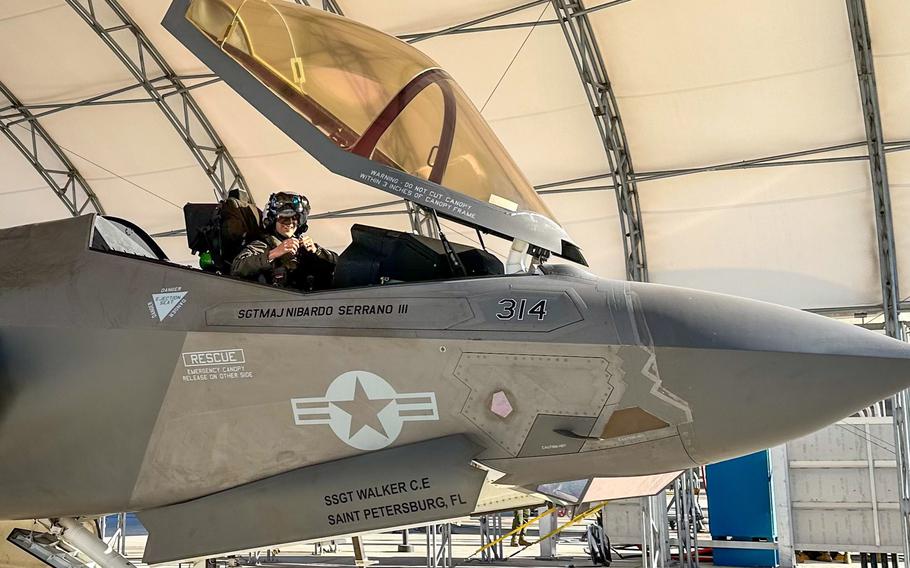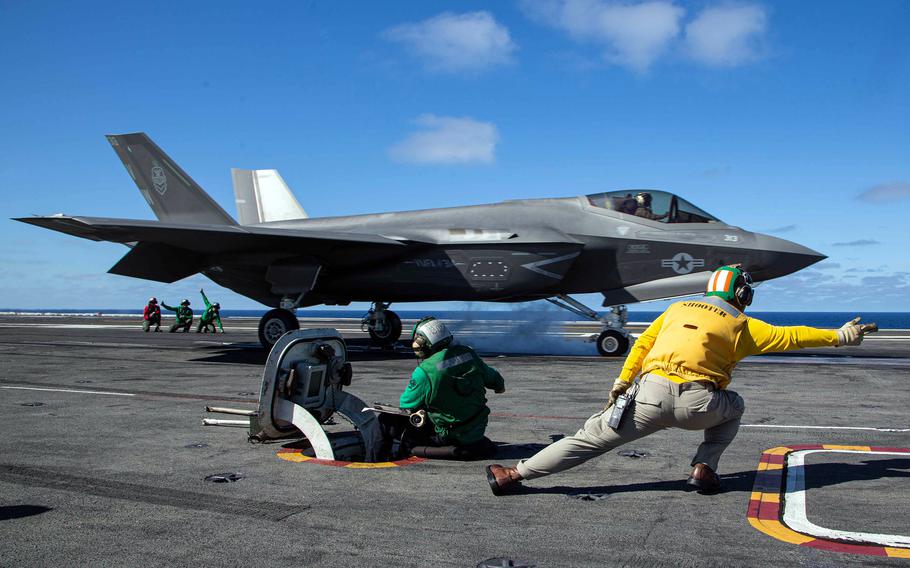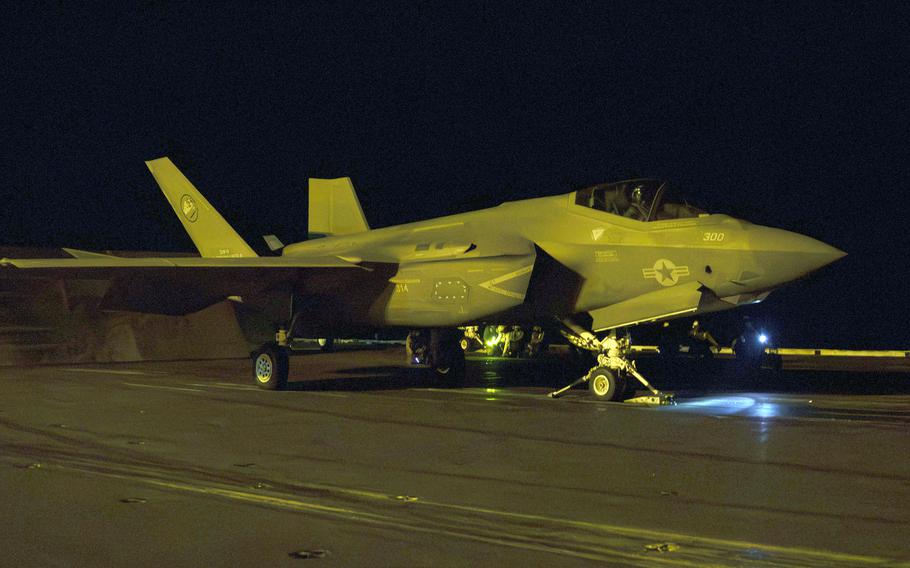
Maj. Zachary Sessa, an F-35C Lightning II pilot with Marine Fighter Attack Squadron 314, was recently named Marine Aviator of the Year for leading the aircraft's first combat sorties in Yemen. (U.S. Marine Corps)
Maj. Zachary Sessa didn’t expect to fly combat missions when he deployed last summer aboard the aircraft carrier USS Abraham Lincoln with the Marine Corps’ first F-35C Lightning II squadron.
But on Nov. 9 and 10, Sessa led the stealth fighter’s first combat sorties, targeting Houthi weapons storage facilities in Yemen. The Iranian-backed group had been attacking military and civilian vessels in the Red Sea and Gulf of Aden.
Sessa’s role in the mission earned him the Alfred A. Cunningham Award, named for the Marines’ first aviator, and the title of Marine Aviator of the Year, according to an April 23 news release from the 3rd Marine Aircraft Wing.
His unit — Fighter Attack Squadron 314, based at Marine Corps Air Station Miramar, Calif. — was also named Marine Fighter Attack Squadron of the Year.
It was embarked with Carrier Air Wing 9 aboard the Abraham Lincoln between July 11 and Dec. 14.

Maj. Zachary Sessa, an F-35C Lightning II pilot with Marine Fighter Attack Squadron 314, was recently named Marine Aviator of the Year for leading the aircraft's first combat sorties in Yemen. (U.S. Marine Corps)
After leaving its homeport, the carrier was informed it would operate in the 5th Fleet’s area of responsibility, Sessa told Stars and Stripes by phone Tuesday. The fleet oversees operations in the Persian Gulf, Red Sea, Arabian Sea and parts of the Indian Ocean.
That was when “the possibility of combat operations certainly came to the table,” he said from Yuma, Ariz., where he is now an F-35 instructor pilot.
“This wasn’t my first deployment in an F-35,” he said, “but it was my first flying combat sorties, so it was a challenging experience to learn a completely different [area of responsibility].”
Sessa, 33, of Butler, Pa., also served as the Marines’ first F-35C weapons and tactics instructor during the deployment, according to the release.
The F-35C, used by both the Navy and Marine Corps, is a long-range, carrier-capable strike fighter, according to manufacturer Lockheed Martin.
Sessa said he flew the combat missions at night, which required changes to his sleep schedule to stay alert.
“A lot of these challenges were things that I was familiar with from a previous deployment that I hadn’t even really thought about,” he said. “But as we started executing these operations, they became increasingly important because fatigue certainly sets in.”
Lt. Col. Jeffrey Davis, the 314th’s commander during the deployment, credited Sessa with the squadron’s success.
“Maj. Sessa’s integral role in unprecedented combat strikes and his contribution to mission success is a testament to his leadership, experience, and proficiency, forever etched in Black Knight history,” Davis told Stars and Stripes by email Thursday.

An F-35C Lightning II with Marine Fighter Attack Squadron 314 prepares to launch from the flight deck of the aircraft carrier USS Abraham Lincoln in November 2024. (U.S. Navy)
A third-generation aviator, Sessa comes from a family of pilots. His father, retired Pennsylvania National Guard Capt. Michael Sessa, flew the A-7D Corsair attack plane. His grandfather, retired Marine Ron Sessa, later became a commercial pilot.
“My grandfather owned a little plane for a while, and I remember I was probably 9 or 10 going out there and flying around with my dad and grandfather,” Zachary Sessa said.
He said an internship at the Pentagon while attending the College of Wooster in Ohio helped him decide to serve. He was commissioned in March 2015.
During the deployment, Sessa said he helped train six F-35 section leads, three division leads, two air combat maneuvering instructors, one Lightning tactics instructor, two low-altitude tactics instructors and one F-35 mission commander.
“It’s not just a couple pilots out there flying an F-35,” he said. “There is a massive network of assets and efforts that [are] taking place to allow these sorties to occur.”